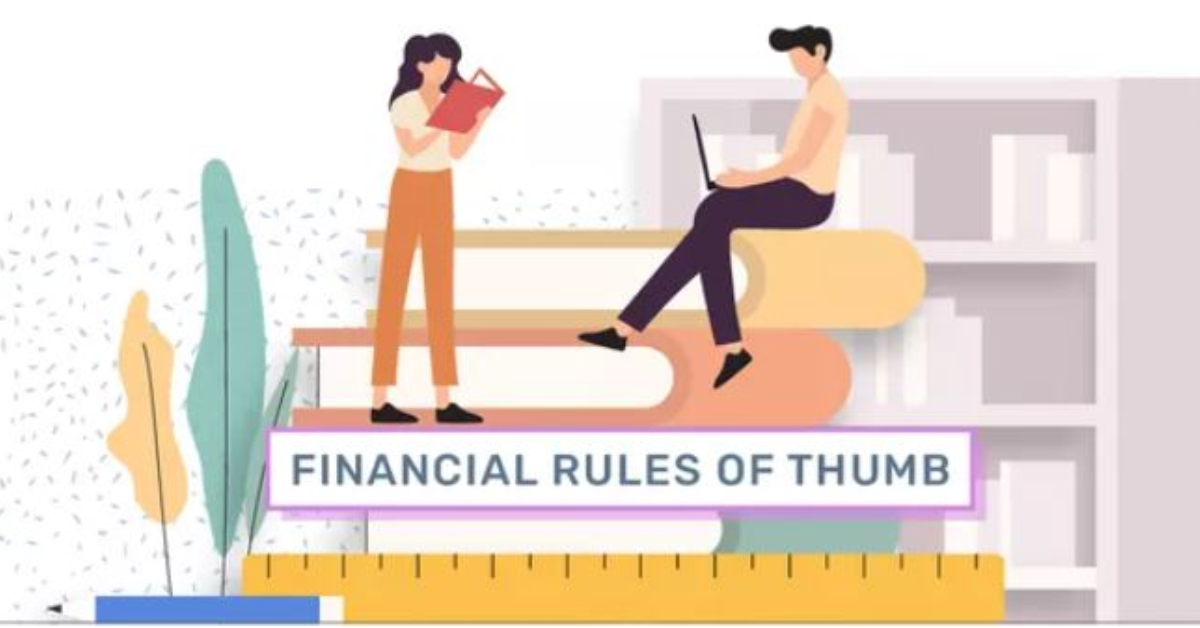This simple rule can help you decide whether to refinance.

Homeowners are often encouraged to refinance their mortgages when interest rates are low. In fact, many mortgage-based commercials recommend refinancing to save money by taking advantage of historically low rates. The rule of thumb is that it’s best to refinance when interest rates are at least 1% lower than your current rate.
But that’s not the only factor you should consider. We’ll cover the pros and cons of the 1% rule of thumb for refinancing, provide several examples, and explain another mortgage rule of thumb to help you weigh your options.
Key Takeaways
- The 1% rule of thumb for refinancing is only a general guideline.
- The greater the rate decrease, the greater the potential savings.
- Refinancing when the rate difference is less than 1% can sometimes be a good option.
- Interest rates aren’t the only reason to refinance.
- The break-even point is as important as the rate.
How Does the Refinancing Rule of Thumb Work?
The 1% refinancing rule of thumb says that you should consider refinancing your home when you can get an interest rate that is at least one percentage point lower than your current rate. The lower the new rate, the better.
“If you have a $500,000 loan amount, the monthly savings with a [1 percentage point] decrease in rate is about $280 a month, or $3,360 a year,” Melissa Cohn, executive mortgage banker at William Raveis Mortgage, told The Balance by email.
Why the 1% Rule for Refinancing Generally Works
Using 1% as a rule of thumb for deciding when to refinance makes sense because you could save several thousand dollars each year. To continue with the example above, “If you have a conforming loan, assuming closing costs are around $6,000, then it [will take] just under two years to break even and truly take advantage of the savings with the refinancing,” Cohn said.
Note: When interest rates drop even a tiny bit, some homeowners get excited about the potential to refinance. But your savings won’t be as substantial if the rate is less than one percentage point below your current rate.
Let’s say you’re thinking about refinancing a $200,000 loan that’s currently at 6.0% with a monthly payment of $1,199. Here’s what you’d save based on refinancing to rates that are 0.5 and 1 percentage points lower.
| Refinance to 5.5% | Refinance to 5% | |
|---|---|---|
| Monthly payment | $1,136 | $1,074 |
| Monthly savings (pre-tax) | $63 | $125 |
| Annual savings (pre-tax) | $756 | $1,500 |
But those savings won’t all end up in your pocket. You’d have to subtract refinancing fees, closing costs, and prepayment penalties. Closing costs average about $5,000, according to Freddie Mac. The potential savings of refinancing at a rate less than one percentage point under your current rate might not be worth it when you factor in these costs.
Other Factors to Consider
The 1% rule of thumb doesn’t consider every aspect of a mortgage. It can be worth refinancing a jumbo loan even if the new rate is less than one percentage point under your current rate, said Cohn. Jumbo loans, or non-conforming loans, were loans over $548,250 in 2021, increasing to $647,200 in 2022, and refinancing a larger loan after a 0.5% rate drop could save you a significant amount of money.
Other reasons to refinance may not result in immediate savings. “If you have an adjustable rate, you may want to refinance to a fixed rate to benefit from locking the rate in permanently,” suggested Cohn. Otherwise, the amount you pay each month will increase or decrease along with the current interest rate, and some mortgages even have a limit on how low your interest rate can go.
Cohn also noted that some people choose to refinance to a shorter term so they can pay the mortgage off faster. You might refinance from a 30-year to a 15-year mortgage. “Refinancing can also work if you have a HELOC (home equity line of credit) and want to consolidate the first and second [loans] into a new first mortgage,” she explained.
When it comes to deciding whether to refinance, Cohn said, “It’s really a question of how long you think you’ll remain in your home and how long will it take to actually benefit from the refinancing.”
1% Refinancing Rule vs. Break-Even Point Rule
The 1% refinancing rule of thumb is a good guide, but you should weigh it against the break-even point rule of thumb. “This rule of thumb is based on how long it will take you to break even on the refinancing, based upon the closing costs and savings,” Cohn explained. It’s the point at which you’ll actually start saving money after paying off your refinancing fees. That’s why you should consider how long you plan to stay in the home as part of your refinancing decision.
Let’s go back to our example above about refinancing a $200,000 mortgage from 6% to 5%. You’d save $125 a month, which works out to $90 after taxes. But let’s say the fees and closing costs for your new mortgage amount to $2,500. It would take you 28 months to break even if you divide your costs ($2,500) by the monthly savings ($91). It may not be worth it to refinance your mortgage if you don’t plan on staying in the house that long.
To read the full article, click here.